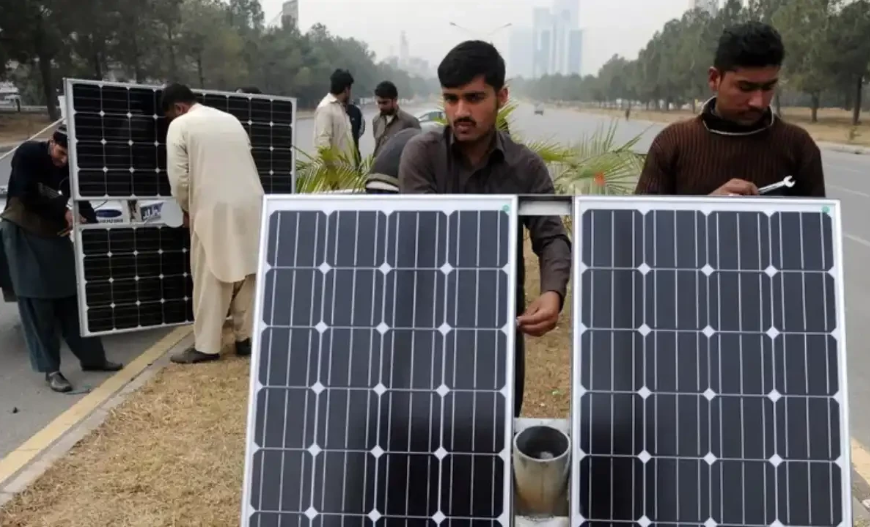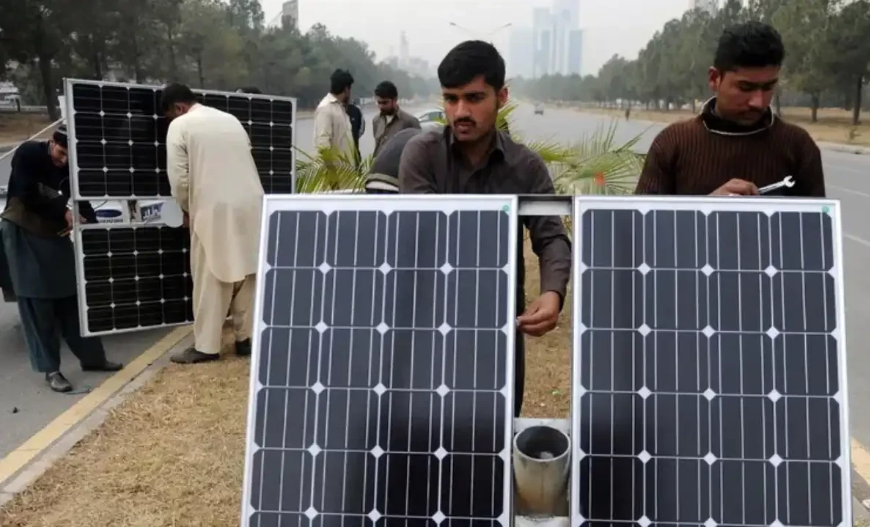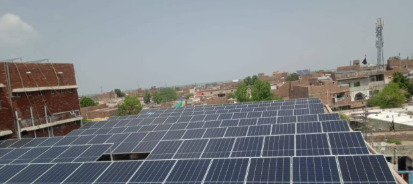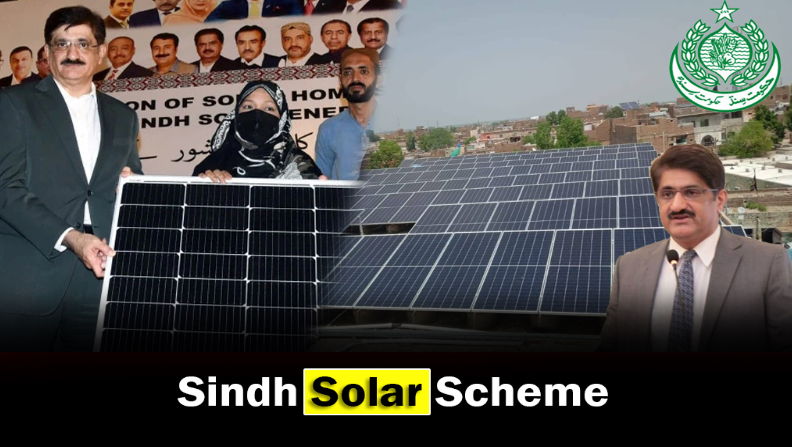The Sindh Solar Panel Scheme 2025 – How to Apply Online is one of the largest renewable energy programs launched in Pakistan at the provincial level. It aims to support low-income households by providing free or subsidized solar home systems. With rising electricity prices, heavy dependence on fossil fuels, and recurring load-shedding, the Sindh government has designed this initiative to promote clean energy access, reduce household energy costs, and improve climate resilience.
The scheme has already distributed 200,000 solar systems in its first phase and is expanding to reach hundreds of thousands of additional families in the coming months. A special allocation of 130,000 free solar kits has also been introduced for households consuming less than 100 electricity units per month. The Sindh Solar Panel Scheme 2025 is therefore both an energy relief package and a climate-focused development program.

Objectives of the Sindh Solar Panel Scheme 2025
The Sindh government launched the scheme with specific social, economic, and environmental goals in mind:
- To provide low-cost, renewable energy to underserved families.
- To reduce electricity bills for low-consumption households.
- To minimize dependence on the national grid and power distribution companies.
- To promote renewable energy usage and reduce reliance on fossil fuels.
- To address climate change impacts by lowering carbon emissions.
- To support rural communities where grid supply is unreliable or absent.
- To improve social welfare by ensuring electricity for lighting, cooling, and communication.
These objectives highlight the government’s broader vision of sustainable development and energy security.
Technical Features of the Solar Systems
Each solar kit distributed under the Sindh Solar Panel Scheme 2025 is designed to cover essential household energy needs. The kit includes:
- An 80-watt solar panel
- Smart power management unit
- Lithium-iron phosphate battery (18Ah capacity)
- Energy-saving LED bulbs
- DC pedestal fan
- Charging ports for mobile devices
The system ensures reliable power supply for lighting, basic cooling, and mobile charging. The inclusion of energy-efficient LED lights and a storage battery guarantees usability during nighttime hours.
Phases of Implementation Sindh Solar Panel Scheme 2025
The government structured the program in multiple phases to ensure smooth distribution and wider coverage.
Phase One
- Distribution of 200,000 solar kits.
- Beneficiaries were selected through verified household data.
- Families paid a small share under a subsidized package.
Phase Two
- Expansion of 300,000 additional solar systems.
- Coverage extended to more districts, both rural and urban.
- Beneficiary verification carried out to ensure fairness.
Free Solar Panel Allocation
- 130,000 solar systems provided completely free.
- Reserved for households using less than 100 units of electricity per month.
- Full subsidy by the provincial government.
This phased approach allows the scheme to gradually expand while maintaining transparency and accountability.
Eligibility Criteria
To qualify for the Sindh Solar Panel Scheme 2025, applicants must meet the following conditions:
- Must be a permanent resident of Sindh.
- Monthly household electricity consumption must not exceed 100 units for at least six months.
- Applicants should not have received a solar kit in any previous government program.
- The household must fall within the low-income bracket.
These criteria ensure that only the most deserving families benefit from the initiative.
Required Documents
Applicants are required to provide the following documents:
- Copy of Computerized National Identity Card (CNIC).
- Latest electricity bill showing usage of 100 units or less.
- Completed and verified application form signed by a Union Council chairman or a gazetted officer.
Incomplete applications or those without proper verification are rejected.

How to Apply for the Sindh Solar Panel Scheme 2025
Offline Submission
Applicants can submit the required documents at designated energy offices or at the provincial Energy Department headquarters. The documents must be submitted before the official deadline.
Online Application (Upcoming)
The Sindh government is preparing to launch an online portal where applicants will be able to submit forms digitally, upload scanned documents, and track their applications. Until then, offline applications remain the primary method.

Selection Procedure
The selection process has been designed to be transparent. If the number of applicants exceeds the available solar systems, the government will conduct a ballot (lottery).
- The lottery system ensures fairness when demand exceeds supply.
- The final decision is made by the Project Monitoring Committee.
- Decisions are final and cannot be legally challenged.
This process guarantees equal opportunity for all eligible applicants.
Distribution and Installation
The Sindh government has partnered with non-governmental organizations to carry out the distribution and installation of the solar kits.
- All installations are free of cost.
- Professional teams install the systems directly at beneficiary households.
- Third-party monitoring ensures transparency and system quality.
This approach eliminates exploitation, ensures accountability, and provides families with a fully functional solar solution.
Progress of the Scheme
As of mid-2025, the Sindh Solar Panel Scheme has recorded remarkable progress:
- More than 120,000 applications received under the free solar system scheme.
- Around 77,000 households already equipped with solar kits.
- The remaining systems are being distributed in upcoming phases.
The strong response reflects both the urgent need for affordable energy solutions and the trust built in the scheme’s process.
Economic and Social Impact
The Sindh Solar Panel Scheme is more than an energy program. It directly contributes to economic relief and social development.
Economic Impact
- Reduction in monthly electricity expenses.
- Increased household savings for education, food, and healthcare.
- Decreased reliance on expensive electricity from grid companies.
Social Impact
- Students now have access to lighting at night for study.
- Families enjoy comfort through solar-powered fans during power cuts.
- Mobile charging enhances communication and access to digital resources.
These improvements enhance overall quality of life for the beneficiaries.
Environmental and Climate Benefits
One of the major long-term impacts of the scheme is its contribution to environmental protection.
- Solar energy reduces greenhouse gas emissions.
- Transition away from fossil fuels promotes sustainability.
- Supports national and international climate goals.
- Encourages communities to adopt renewable energy practices.
By distributing solar systems, Sindh is playing a critical role in Pakistan’s renewable energy transition.
Integration with Broader Energy Vision
The Sindh government has integrated the scheme with other renewable energy initiatives, such as:
- Solarization of government schools, libraries, and hospitals.
- Development of waste-to-energy plants.
- Exploration of floating solar panel projects.
- Partnerships with international organizations for green financing.
Together, these measures reflect a long-term strategy for energy independence and sustainability.
Challenges Ahead
Despite its achievements, the scheme also faces challenges:
- Applications far exceed the number of available kits.
- Maintenance of systems in remote areas.
- Awareness campaigns needed to guide applicants.
- Requirement for more funding to expand coverage.
The government, however, has committed to overcoming these challenges by seeking additional funding and expanding partnerships.
Conclusion Sindh Solar Panel Scheme 2025
The Sindh Solar Panel Scheme 2025 – How to Apply Online is a transformative step by the Sindh government to empower low-income households with renewable energy. By distributing free and subsidized solar kits, the program reduces electricity bills, improves living conditions, and promotes sustainable development.
So far, the scheme has reached tens of thousands of families and is expected to cover hundreds of thousands more by the end of 2025. Its success lies not only in energy relief but also in its contribution to climate action, economic savings, and social welfare. Sindh Solar Panel Scheme 2025 https://yppakistan.org.pk/sindh-solar-panel-scheme/

